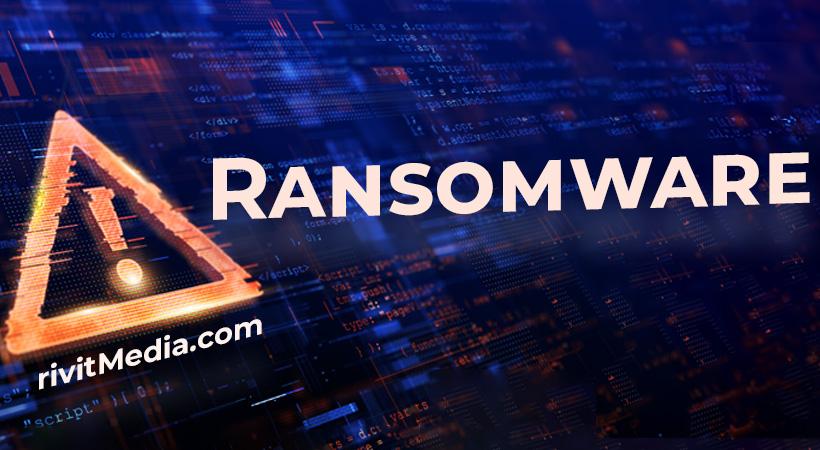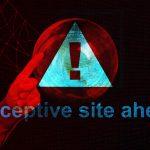The emergence of the new EDA2 .L0CKED ransomware variant poses a significant threat to digital security, utilizing deceptive tactics and a purported RZA4096 key to instigate a fake encryption algorithm masquerading as RSA-4096. This article aims to shed light on the nature of this malicious software, its adverse effects, propagation methods, effective removal strategies, and proactive measures for safeguarding against future infiltrations.
Understanding .L0CKED EDA2 Ransomware
The .L0CKED EDA2 ransomware is the latest iteration of the EDA2 ransomware family, characterized by a weak encryption algorithm and the use of a .L0CKED file extension. Notably, these variants are numerous, as the virus’s open-source nature has led to the proliferation of its code online. Victims are often coerced into paying a demanded sum of 0.3 BTC, but it is strongly advised against succumbing to these demands. Instead, this article provides insights into the removal process and offers a potential solution for file restoration using the EDA2 decrypter.
Dangers Posed by .L0CKED EDA2 Ransomware
The .L0CKED variant exhibits alarming symptoms, including demands for victims to visit a TOR-based webpage, a request for a 0.3 BTC payment to decrypt files, and the alteration of the wallpaper accompanied by a DecryptFile.txt ransom note. The infection spreads through various channels, including exploit kits, DLL file attacks, malicious JavaScript, and obfuscated drive-by downloads. Recognizing the dangers posed by this ransomware is crucial for users to comprehend the urgency of its removal and take preventive measures.
Propagation Methods
Similar to other variants, .L0CKED EDA2 spreads through malicious executables, often concealed in deceptive emails resembling legitimate communications from trusted entities such as FedEx, Amazon, eBay, Walmart, or banks. These phishing emails entice users to open malicious attachments, leading to the installation of the .L0CKED virus on the compromised system.
Post-Infection Actions
Once infiltrated, .L0CKED EDA2 encrypts a wide range of file types, spanning documents, images, and databases. The ransomware also alters the wallpaper and drops a DecryptFile.txt ransom note, directing victims to a TOR-based website where a hefty ransom is demanded. However, it is crucial to note that this EDA2 variant is decryptable, emphasizing the importance of immediate removal and file decryption.
Dealing with .L0CKED EDA2 Ransomware
To effectively deal with the .L0CKED EDA2 ransomware, users should consider a multi-step approach. Begin by removing the malicious executable and associated registry values. Furthermore, vigilance is key, and avoiding the payment of the ransom is strongly advised. This article encourages users to explore the provided decryption solution, offering hope for file restoration without succumbing to extortion.
Upon successfully infiltrating the computer, the L0CKED EDA2 virus swiftly initiates its malicious activities, targeting a range of file types for encryption. Files bearing extensions such as *.txt, *.doc, *.docx, *.xls, *.xlsx, *.ppt, *.pptx, *.odt, *.jpg, *.png, *.csv, *.sql, *.mdb, *.hwp, *.pdf, *.php, *.asp, *.aspx, *.html, *.xml, and *.psd fall victim to this encrypting onslaught.
The aftermath of this encryption spree manifests in two noticeable alterations that serve as ominous indicators of the ransomware’s presence. Firstly, the virus orchestrates a change in the computer’s wallpaper, a visual cue that signifies the compromise of the system’s integrity. Simultaneously, the malevolent DecryptFile.txt ransom note is deposited, echoing a consistent message to the user.
The Message from L0CKED EDA2 Ransomware Operators
WARNING
@ NOT YOUR LANGUAGE? USE https://translate.google.com
@ What happened to your files?
@ All of your files were protected by a strong encryption with RZA4096
@ More information about the en-Xryption keys using RZA4096 can be found here: http://en.wikipedia.org/wiki/RSA_(cryptosystem)
@ How did this happen?
@ Specially for your PC was generated personal RZA4096 Key, both publik and private.
@ ALL YOUR FILES were enCrypted with the publik key, which has been transferred to your computer via the Internet.
@ Decrypting of your files is only possible with the help of the privatt key and de-crypt program, which is on our Secret Server @ What do I do ?
@ So, there are two ways you can choose: wait for a miracle and get your price doubled, or start obtaining BITCOIN NOW!, and restore your data easy way
@ lf You have really valuable data, you better not waste your time, because there is no other way to get your files, except make a payment @ Your personal ID: Open DecryptFile.txt
@ For more specific instructions, please visit your personal home page, there are a few different addresses pointing to your page below:
http://y6wb5h3ksb6hppeh.onion/service.html
http://y6wb5h3ksb6hppeh.onion.to/service.html
@ If for some reasons the addresses are not available, follow these steps:
- Download and install tor-browser: http://www.torproject.org/projects/torbrowser.html.en
- After a successful installation, run the browser
- Type in the address bar – http://y6w5h3ksb6hppeh.onion/service.html
- Follow the instructions on the site
Be sure to copy your personal ID and the instruction link to your notepad not to lose them.
The Message from L0CKED EDA2 Ransomware Operators
Protecting Your System from L0CKED EDA2 Ransomware
Preventing future infiltrations requires a proactive stance. Exercise caution when interacting with emails, especially those containing suspicious attachments. Regularly update your system, employ robust security practices, and educate yourself on emerging threats. By fostering a security-conscious mindset, users can fortify their systems against potential ransomware attacks and contribute to a safer digital environment.
L0CKED EDA2 Ransomware Removal Guide
Step 1: Disconnect from the Internet
To prevent further communication between the ransomware and its command and control server, disconnect your computer from the internet. This will help contain the infection and minimize the risk of further damage.
Step 2: Identify and Terminate Malicious Processes
- Press
Ctrl + Shift + Escto open the Task Manager. - Look for suspicious processes, especially those consuming high CPU or memory.
- Right-click on the suspicious process and select “End Task.”
Step 3: Remove Malicious Files
- Navigate to the following locations and delete any suspicious files:
- %AppData%
- %Temp%
- %LocalAppData%
- %UserProfile%
- Look for recently created or modified files with random names and suspicious extensions. Delete them.
Step 4: Remove Malicious Registry Entries
- Press
Win + Rto open the Run dialog. - Type
regeditand press Enter to open the Registry Editor. - Navigate to:Copy code
HKEY_LOCAL_MACHINE\SOFTWARE\Microsoft\Windows NT\CurrentVersion\Winlogon - Look for suspicious entries in the right pane. If found, right-click and delete them.
Step 5: Revert System Changes
- Open the Run dialog again (
Win + R). - Type
msconfigand press Enter to open the System Configuration. - Go to the “Startup” tab and disable any suspicious entries.
- Apply the changes and restart your computer.
Step 6: Restore Wallpaper
- Right-click on the desktop and select “Personalize.”
- Choose a new wallpaper to replace the altered one set by the ransomware.
Step 7: Decrypt Files
Utilize the EDA2 decrypter tool to attempt file restoration. Refer to the tool’s documentation for usage instructions.
Step 8: Monitor System Activity
Keep an eye on your system for any unusual behavior. If you notice any signs of re-infection, repeat the removal steps or seek further assistance.
Additional Tips
- Regularly backup your important files to an external device or cloud storage to mitigate the impact of future ransomware attacks.
- Update your operating system and software regularly to patch vulnerabilities.
- Exercise caution when opening email attachments or clicking on links, especially from unknown or suspicious sources.
Remember, it’s crucial to approach ransomware removal with caution, and if you’re unsure, seek assistance from cybersecurity professionals.
Conclusion
The .L0CKED EDA2 ransomware serves as a stark reminder of the evolving landscape of cyber threats. Understanding its intricacies, recognizing its dangers, and adopting proactive security measures are paramount for users seeking to safeguard their digital assets. By staying informed and taking decisive actions, users can mitigate the impact of .L0CKED EDA2 and contribute to a resilient and secure online ecosystem.





